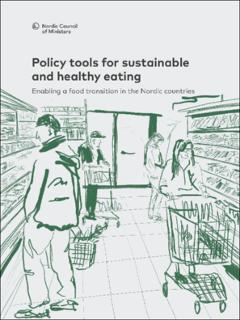| dc.description.abstract | This report delves into the gap between prevailing Nordic diets and the Nordic Nutrition Recommendations (NNR) 2023, emphasizing the necessity of implementing policy instruments designed to guide the food environment towards fostering significant behavioural change. It highlights the responsibility of governmental agencies in steering the food environment to achieve substantial behavioural shifts necessary for embracing healthier and more sustainable dietary patterns. Scholarly emphasis on behavioural shifts informs the report’s comprehensive analysis of determinants that influence a transition towards healthier eating habits. It introduces a Nordic behaviour change framework that prioritizes enhancing the availability, affordability, accessibility, and attractiveness of healthy food options, concurrently diminishing these aspects for unhealthy choices. This framework identifies determinants across food-related, personal, and socio-environmental spheres, shedding light on the critical influence of early food experiences, demographic factors, education, financial stability, cultural norms, and social determinants on dietary behaviours. Targeted interventions aimed at augmenting capability, opportunity, and motivation at various societal levels are identified as crucial for catalysing meaningful dietary transformation. The report underscores the criticality of policy instruments that address economic variables, provide information, and leverage nudging strategies to incentivise healthier dietary selections. It advocates for a multifaceted policy approach encompassing taxes, subsidies, directives for public procurement, public awareness campaigns, educational initiatives, and labelling regulations as instrumental interventions. It underscores the need for proactive government action and strategic policy measures as essential to fostering healthier and more sustainable dietary patterns. The report illustrates the necessity for governmental bodies, in collaboration with the food industry, retailers, and other stakeholders, to pursue a unified strategy. This strategy should effectively blend regulatory actions—like taxes and subsidies—with strong public procurement policies, the establishment of a Nordic Climate Label, and targeted efforts to limit the marketing of unhealthy food products. The aim is to harness a collective, synergistic approach, utilizing the Nordic behaviour change framework to implement complementary measures that together promote the development of healthier and more sustainable food sconsumption within the Nordic region. The report outlines five recommendations, emphasizing collaboration across policy and industry to steer consumer behavior for a healthier, greener world. | |
